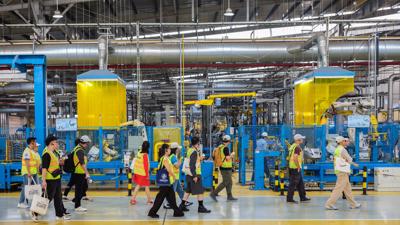Navigating Early Retirement For Vietnam's Female Workers in 2024
In Vietnam, the landscape of retirement is evolving, particularly for female workers. As of 2024, the criteria for early retirement have been delineated, offering a glimpse into the complexities of social insurance and labor regulations.

Vietnam Social Insurance has recently shed light on the conditions governing early retirement, particularly for female workers who have endured arduous circumstances in their professional lives.
The eligibility criteria are anchored in legislative frameworks such as the 2019 Labor Code and Decree No. 135/2020/ND-CP, issued by the Government in November 2020.
While the standard retirement age stands at 56 years and 4 months for female employees, certain provisions allow for earlier exits from the workforce, presenting both challenges and opportunities for women across the nation.
Under these regulations, female employees can retire prematurely under various circumstances. For those who have toiled in extremely challenging environments for over 15 years and contributed to social insurance for a minimum of 20 years, early retirement becomes a tangible possibility.
This pertains specifically to individuals who have not worked in regions with a regional allowance coefficient of 0.7 or higher, emphasizing the focus on areas with severe socioeconomic hardships.
The retirement age trajectory for female workers, under normal working conditions, has been meticulously outlined. Commencing from January 1, 2021, the retirement age for those with 20 years of social insurance payments begins at 55 years and 4 months, incrementally increasing by 4 months annually until reaching 60 years in 2035. Consequently, in 2024, the standard retirement age stands at 56 years and 4 months.
However, deviations from this norm are permitted under specific circumstances. Female employees may retire up to 5 years earlier than the standard retirement age if they meet certain criteria.
This includes individuals who have dedicated at least 15 years to professions characterized by heaviness, toxicity, or danger, as designated by the Ministry of Labor, War Invalids, and Social Affairs.
Moreover, those who have spent over 15 years in regions with extremely challenging socioeconomic conditions, including areas with a regional allowance coefficient of 0.7 or more, are eligible for early retirement.
Furthermore, a combination of occupational hazards and challenging working environments can qualify female workers for premature retirement. Those who have spent a cumulative period of 15 years or more in demanding professions or regions, coupled with a reduced working capacity of 61% or more, are entitled to early retirement benefits.
For some, the opportunity for early retirement extends even further. Female workers engaged in underground coal mining for at least 15 years can retire up to 10 years earlier than the standard retirement age, provided they have contributed to social insurance for two decades and exhibit a diminished working capacity of 81% or more.
Moreover, there are instances where age becomes inconsequential in the pursuit of retirement. Female workers afflicted with HIV/AIDS due to occupational accidents, or those experiencing a significant reduction in working capacity, are exempt from age restrictions.
This applies particularly to individuals who have dedicated 15 years or more to especially demanding professions listed by the Ministry of Labor, War Invalids, and Social Affairs, as well as the Ministry of Health.
The determination of regions with severe socioeconomic challenges serves as a pivotal factor in assessing eligibility for early retirement. Circular No. 19/2021/TT-BLDTBXH, issued by the Minister of Labor, War Invalids, and Social Affairs, outlines the regions deemed to have extremely difficult socioeconomic conditions.
These designations, established prior to January 1, 2021, serve as a benchmark for evaluating cases warranting early retirement under adverse working conditions.
Navigating the intricacies of early retirement necessitates direct engagement with Vietnam Social Insurance. Workers are encouraged to liaise with local Social Insurance agencies to ascertain specific eligibility criteria tailored to their circumstances.
As the custodian of employees' social insurance, the Social Insurance agency plays a pivotal role in facilitating access to retirement benefits.
In essence, the landscape of retirement for female workers in Vietnam is nuanced, reflecting a delicate balance between labor rights, socioeconomic realities, and legislative frameworks.
While early retirement offers relief to those grappling with occupational hazards and challenging environments, its implementation underscores the need for meticulous adherence to regulatory standards. As Vietnam continues to evolve, ensuring equitable access to retirement benefits remains paramount, safeguarding the welfare of its workforce.







